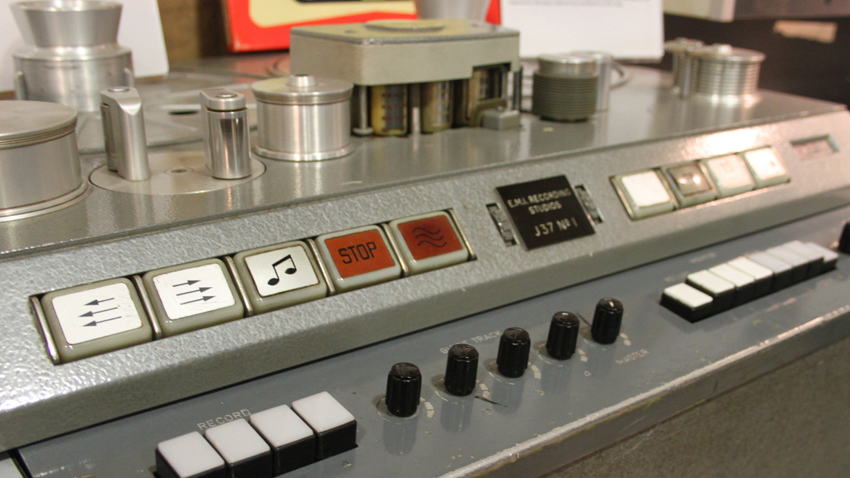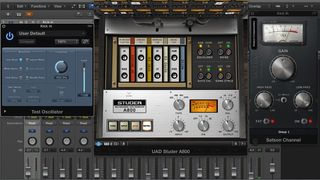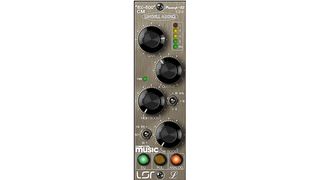8 ways to make your music sound 'more analogue' in your DAW
Warm up your tunes with our top tips

In today's digital studio, a touch (or a lot) of analogue warmth and character can go a long way. Here, we'll reveal eight plugin-based techniques to bring some of that old-school magic to your tracks.
For more on emulating analogue gear - including exclusive video tutorials - pick up Computer Music 218, which is on sale now.
1. Precious resources
The best analogue emulations can be quite CPU-intensive, so running a full analogue-style chain on each and every channel of your project may prove to be more than your system can handle. Thankfully, in our DAW, we don't have to live with the limitations of analogue, so try directing your resources where they're most needed instead. For example, you might use just tape processing for the drums, desk emulations for the vocals, and classic hardware plugins for the bass.

2. Watch your levels
In modern music software, 32-bit floating point processing provides enough headroom for extreme levels. In contrast, analogue equipment performance is far more level-dependent. While this is especially true for recording media like tape, it applies to the whole spectrum of analogue gear. Most decent analogue emulations recreate this aspect, so it's important to hit their 'sweet spot'.
Nevertheless, meter calibration is often flexible and can easily trip things up. In our video example, we're using UAD's Studer A800 tape machine and Sonimus' Satson desk emulation. The A800 is calibrated so that -12dBFS = 0VU, while Satson has three options: -20, -18 or -14dBFS = 0 VU. Here, we've set up a test tone at -12dBFS, set Satson to -14dBFS = 0 VU and trimmed the output of the A800 so that Satson also reads 0 VU. Now we're free to adjust gain levels within these two processors, aware that changes will move away from these ideal - or 'recommended' - levels, and, if pushed higher, could easily result in additional saturation or distortion.

3. The Dolby encoder trick
In the bad old days of tape, noise could be minimised using Dolby encoding and decoding, and one clever old-school trick is to use just the encode circuit as an enhancer. At the time, users even modified the circuits so that just the high frequencies were processed.
In our video, we're using u-he's Satin just for the Dolby A circuit, bypassing the tape emulation and placing it on an auxiliary. We have two Dolby A presets, including a ready-modded one - if this wasn't available, we could simply filter off the low frequencies instead. Adding a little of this processor to each channel adds a lovely airy sheen that isn't overly harsh.
Get the MusicRadar Newsletter
Want all the hottest music and gear news, reviews, deals, features and more, direct to your inbox? Sign up here.
4. Fake it till you make it
Many plugin emulations of analogue gear recreate their saturation/warming aspects. However, commonplace plugins can be useful to capture that crusty analogue vibe as well. Use a typical tape delay set to 100% wet with no feedback to 'fake' a tape sound, or a distortion plugin set very low for preamp-style drive, for example. Even using a noise generator and EQ to create your very own hum and hiss is a valid option.
5. Tape rules!
Engineers often push tape levels to bring out saturation, particularly on transient-heavy sounds like kicks and snares. They also make the most of the available tape types and speeds, both of which can make a considerable difference. In essence, learn the rules for tape, then learn how to break them by testing the medium's limits.
6. Beyond analogue
Plugin developers love to take things to the next level, incorporating features that didn't exist or simply weren't possible in the analogue domain. These range from simple wet/dry output blending to detailed graph-based editing. While it's great to try and accurately replicate what happens in the analogue domain, the abiity to take it up a notch is also very appealing.

7. Diamonds in the rough
Free and affordable plugins aren't just for those who can't afford "better". Simply put, there are some true gems to be had, whatever your budget, and any discerning producer would be doing themselves a disservice by discounting them. What's more, the point-and-shoot simplicity of plugins such as Lindell's 6X-500 CM, AirWindows Channel 4 or Sonimus Satson CM will free you up to focus on other production aspects.
8. Try new hybrids
Another great flexibility afforded us by the software DAW is that we can chain processors in any way we like, combining and re-ordering them very easily. This could be as simple as applying tape saturation in the middle of an insert chain, or, more unusually, using a preamp emulation late in the chain - a postamp, if you like. With only a few mouse clicks between you and a new hybrid, there really is no excuse for always playing it safe
Computer Music magazine is the world’s best selling publication dedicated solely to making great music with your Mac or PC computer. Each issue it brings its lucky readers the best in cutting-edge tutorials, need-to-know, expert software reviews and even all the tools you actually need to make great music today, courtesy of our legendary CM Plugin Suite.

"If I wasn't recording albums every month, multiple albums, and I wasn't playing on everyone's songs, I wouldn't need any of this”: Travis Barker reveals his production tricks and gear in a new studio tour

“My management and agent have always tried to cover my back on the road”: Neil Young just axed premium gig tickets following advice from The Cure’s Robert Smith











